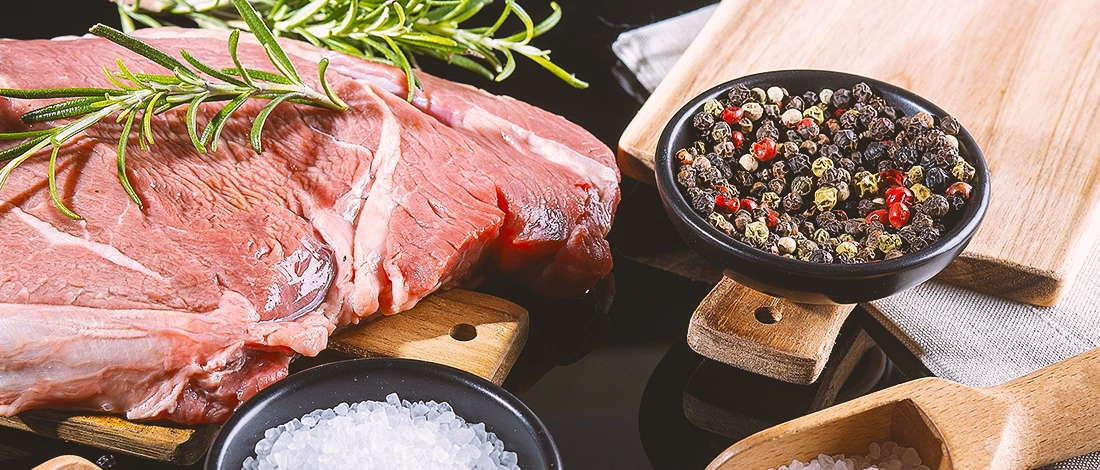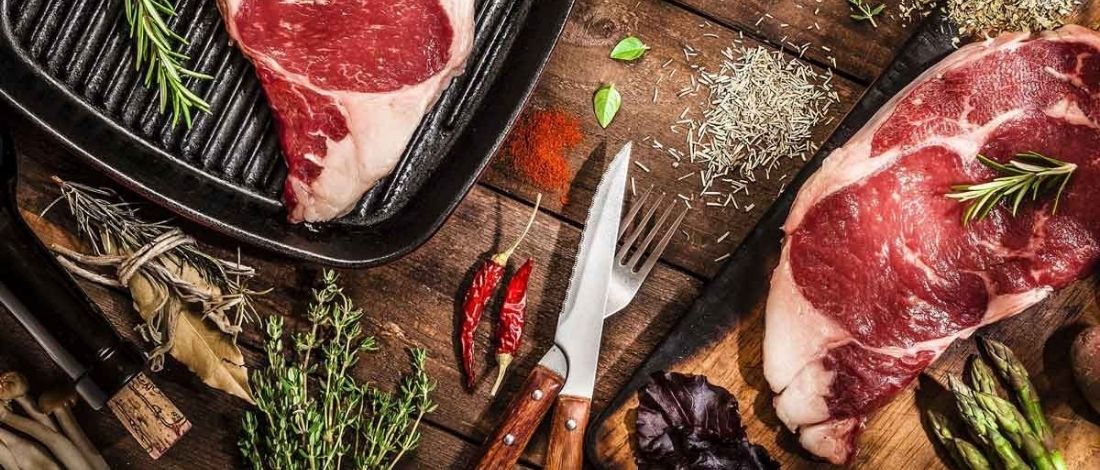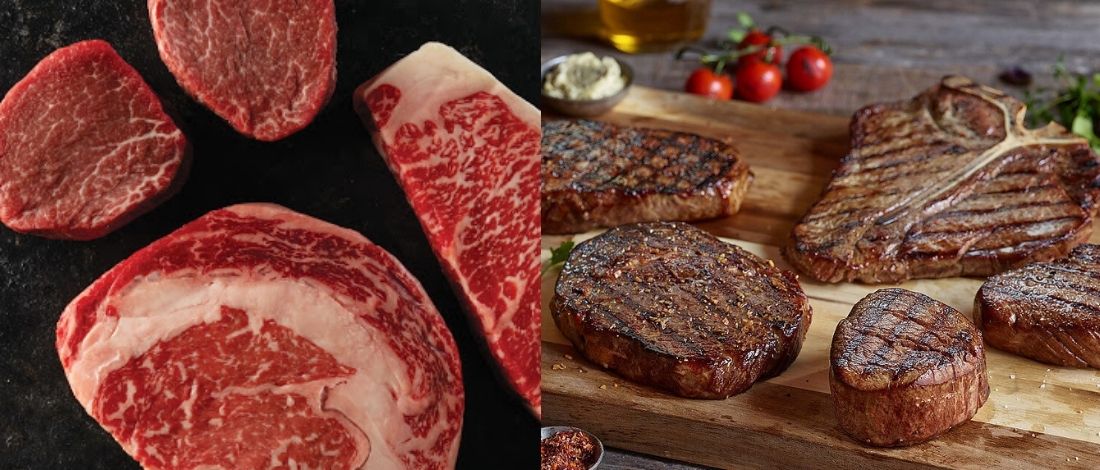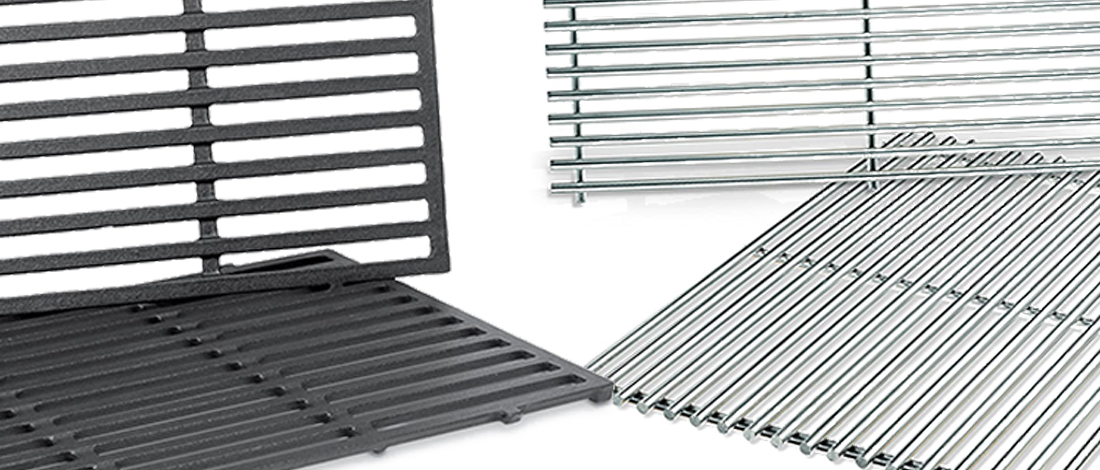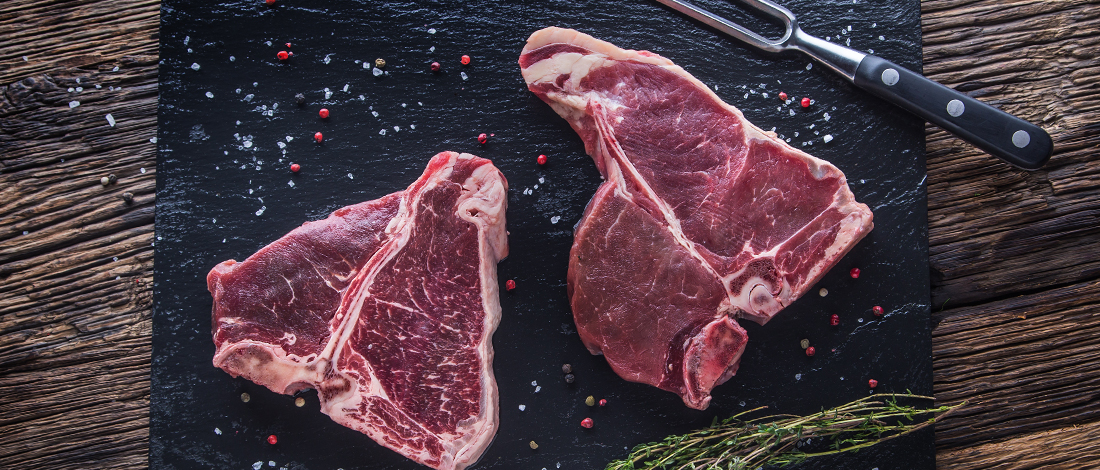My six-year carnivore diet has revealed many eye-opening things about the different types of meats, especially beef.
Out of sheer curiosity, I decided to look into steer and cow meat to see if there's any difference between the cuts in terms of meat quality, marbling, and toughness.
I also talked to my local butcher and a friend nutritionist to get to the bottom of the differences between these cuts.
If you're on a carnivore diet and are looking for a meat delivery service to order antibiotic and hormone-free beef, ButcherBox is an excellent place to start.
Read along to find out which meat is the best of the two.
Quick Summary
- Steer meat and cow meat differ in quality, toughness, marbling, color, and taste, with steer meat generally being more tender and flavorful.
- Steer meat is derived from young, castrated bulls, while cow meat comes from mature, female bovines, often slaughtered when they're older and past their productive years.
- When buying either type of meat, factors to consider include meat color, smell, packaging, and the advice of a butcher.
What is Steer Meat?
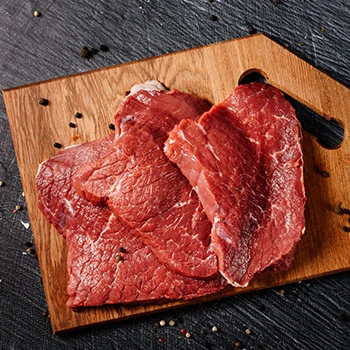
Steer meat is derived from young bulls castrated to limit the production of the male hormone testosterone.
Not all male bovines, though, get castrations. Some that have good genetic makeup are left intact to serve other dairy cows for reproduction since one bull can service many heifers.
Steer or castrated male bovine is commonly used for commercial beef production because of its adequate fat content, growth rate, disease resistance, and ability to handle drought [1].
What is Cow Meat?
Cow meat is derived from a fully grown, mature female bovine.
But most steaks you buy from the grocery store are likely from a steer because cows are raised for breeding rather than meat production.
I discovered that a cattle farmer slaughters cull cows or older cows that have diminished reproductivity and cannot breed more calves.
This could be why female cow meat is sometimes tougher than any beef cuts I've tried.
5 Differences Between Steer and Cow Meat
Here's a breakdown of the major differences between cow and steer bull meat.
1. Meat Quality
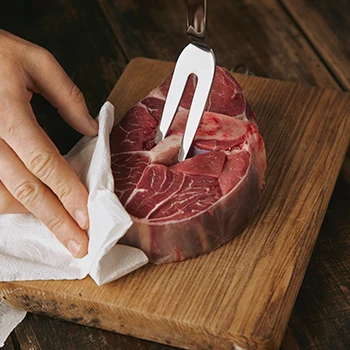
If a steer and a cow were to be slaughtered at the same age, they'd produce high-quality beef. This is because both steers and cows are excellent for beef production.
But cow meat quality tends to depreciate because they're only slaughtered when they're older and way past their productive years.
The meat muscle fibers are old and worn out, unlike steer meat with dense and tightly packed meat fibers [2].
2. Toughness
Having tried steaks from both a cow and steer, I can attest that cow meat is tougher than steer meat.
What makes steer meat a bit more tender is that most are slaughtered at a young age compared to cows.
Typically, cows are kept for breeding and milk production, and they are only killed once their productive years are up, so their flesh is older and tougher.
If you look closely at cow meat, you'll notice that it also contains a lot of coarse meat grains and fibers, indicating a tough cut of meat.
3. Marbling Degree
I prefer steer meat because it has more marbling than cow meat.
Marbling is the white flecks of fat that you see on beef chunks [3].
In the beef industry, castrated male steers are reared primarily for beef.
They're grown and fed on the grass during the first six months, but in the months leading up to slaughter, they are fattened on grain (often maize or soybeans).
The grain-fed male animal will gain weight far more quickly and with greater marbling than the grass-fed female bovine with a lesser marbling degree.
Steer meat has fine marbling meaning the specks of fat are uniformly spaced throughout the lean muscle.
"A steer has a higher growth performance; that's why its slaughtered eight days earlier than a bull."
- Simon Marsh, Beef Lecturer
On the other hand, cow meat has medium marbling.
It has bigger, less uniformly distributed specks of fat than fine marbling, which might impair the cooking and eating experiences.
Larger fat chunks require more time to render and liquefy.
Because of this, when I cook my medium-marbled cow steak to rare or even medium-rare, the fat does not render in time to give the meat juiciness and softness I'm looking for.
This leaves behind gelatinous fat specks that are unpleasant to the taste.
4. Meat Color
We look for a typical color in beef, such as a bright red color. Once animals are slaughtered, the meat reacts with oxygen in the air and turns red.
As it ages, it does tend to turn a gray color, indicating that it lacks oxygen or the meat is from an older animal.
Male cattle products like bull calves and steer meats have a darker red color than female cows.
The darker color is a result of[4]:
- Muscle use
- Myoglobin
- Age
Meat color is affected by how the muscle is used. Male calves, like steers, are aggressive and use more muscle to move around and fight in the farmyard, hence why their meat products have a darker red color.
Castrated males are also more muscular than female cows and because muscles contain myoglobin, steer meat is darker in color than cow meat [5].
Read More: Red Meat vs White Meat
5. Taste
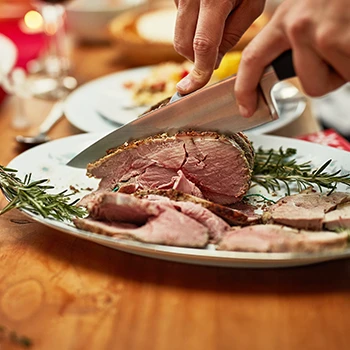
As far as taste is concerned, I find that steer meat is flavourful, leaner, and more tender than cow meat.
But this depends on the age the animal was slaughtered. The younger the steer, the more tender the meat.
Because many cows are kept solely for breeding purposes, most of them are slaughtered at a mature older age than male bovines.
I once bought cow meat from an adult cow, and the beef was really tough. I had to cook it for almost four hours to get my desired tenderness.
I dislike that cow meat also has a more gamey taste, especially if the meat is from a female bovine that has at least one calf.
Tips for Buying Fresh Steer Meat

Knowing what to look for when choosing meat is crucial for health and food safety reasons. Here are my top tips for buying fresh steer meat.
1. Meat Color
Your choice of meat will determine the appropriate color.
Red steer meat should be a deep hue, ranging from purple to red to brown.
If you notice meat that's turning into black or blueish color, stay away as that indicates it's rotten.
2. Smell It
Even if you can't always smell rotting meat, you can detect an unpleasant stench. Avoid taking chances because if anything smells bad, it probably is.
Generally speaking, bacteria stink; therefore, when it has grown sufficiently in the meat package, it produces an unpleasant odor.
3. Packaging

I always check the packing for any signs of scuffs or damage.
Although it may not directly affect meat quality, it does provide information about how to steer meat to be handled and processed.
Your meat was probably handled with the same unclean hands if you notice smudges on the package.
In the same way, a broken package leaves it vulnerable to contamination from the environment.
4. Ask The Butcher
Take advantage of the meat specialist who is right there behind the counter. I try to ask my butcher for help if I'm unsure about any part of the meat.
They always offer me tips on what to look for, the best cuts of meat for my recipe, which meat is freshest in the market, and how to prepare it.
Tips for Buying Fresh Cow Meat
Keep an eye out for these four things when buying fresh cow meat.
1. Is It Dry?
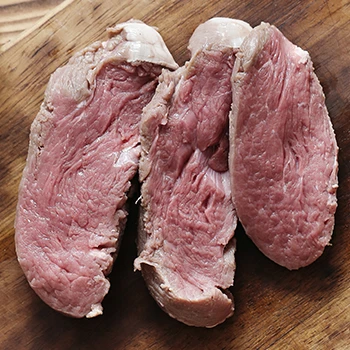
A cow steak is likely terrible if it's dry. A shriveled, dried-out steak indicates its prime has passed.
Unless the steak has a lot of marbling, the dryness will influence the texture and flavor of the steak when you cook it.
Avoid buying dry cow steak by ensuring the steak is frozen in a vacuum-sealed container.
This ensures the meat retains the fluid essential to maintain the steak's natural juiciness and that germs won't get on the steak.
2. Go For Clean Cuts
Identify high-quality meat by the way the meat is butchered. Avoid meat with sharp edges and seek out smooth, equally trimmed cuts.
This is important when purchasing cow meat because poor-quality cow meat is frequently improperly butchered, resulting in the hasty removal of joints and bones.
3. Texture
Meat from cows should be dry, dense, and solid. Muscle fibers should be homogeneous and closely packed.
If you hold the meat and it looks like it's falling apart, this may be a sign of improper handling or low quality.
4. Check Expiry Dates

Check the expiry dates to ensure it hasn't passed or that the cow meat won't go bad before you cook it.
I recommend that you use the meat by the precise date stated on the use-by label.
But sometimes, you can buy fresh meat in bulk and store it in your freezer past the expiration date.
To prevent that, I keep a list of the products in my freezer, along with their expiration dates, so I know what to cook first and when.
Related Articles:
FAQs
Is Steer Meat Good To Eat?
Yes, steer meat is good to eat.
Are Steers Raised For Beef?
Yes, steers are raised for beef because of their faster growth rate.
Do We Eat Cows or Steers?
We eat cows and steers, but the majority of steaks are steers that are explicitly reared for meat production.
Is Steer Meat Tougher Than Cow Meat?
No, steer meat is not tougher than cow meat. Most cows are left for reproduction and slaughtered when they're old; hence their meat is more aged and tougher.
References:
- https://www.ncbi.nlm.nih.gov/pmc/articles/PMC6039332/
- https://www.ncbi.nlm.nih.gov/pmc/articles/PMC4789028/
- https://meatscience.org/TheMeatWeEat/topics/fresh-meat/article/2016/11/15/
- https://ask.usda.gov/s/article/What-determines-the-color-of-meat#
- https://www.ncbi.nlm.nih.gov/pmc/articles/PMC5666178/

